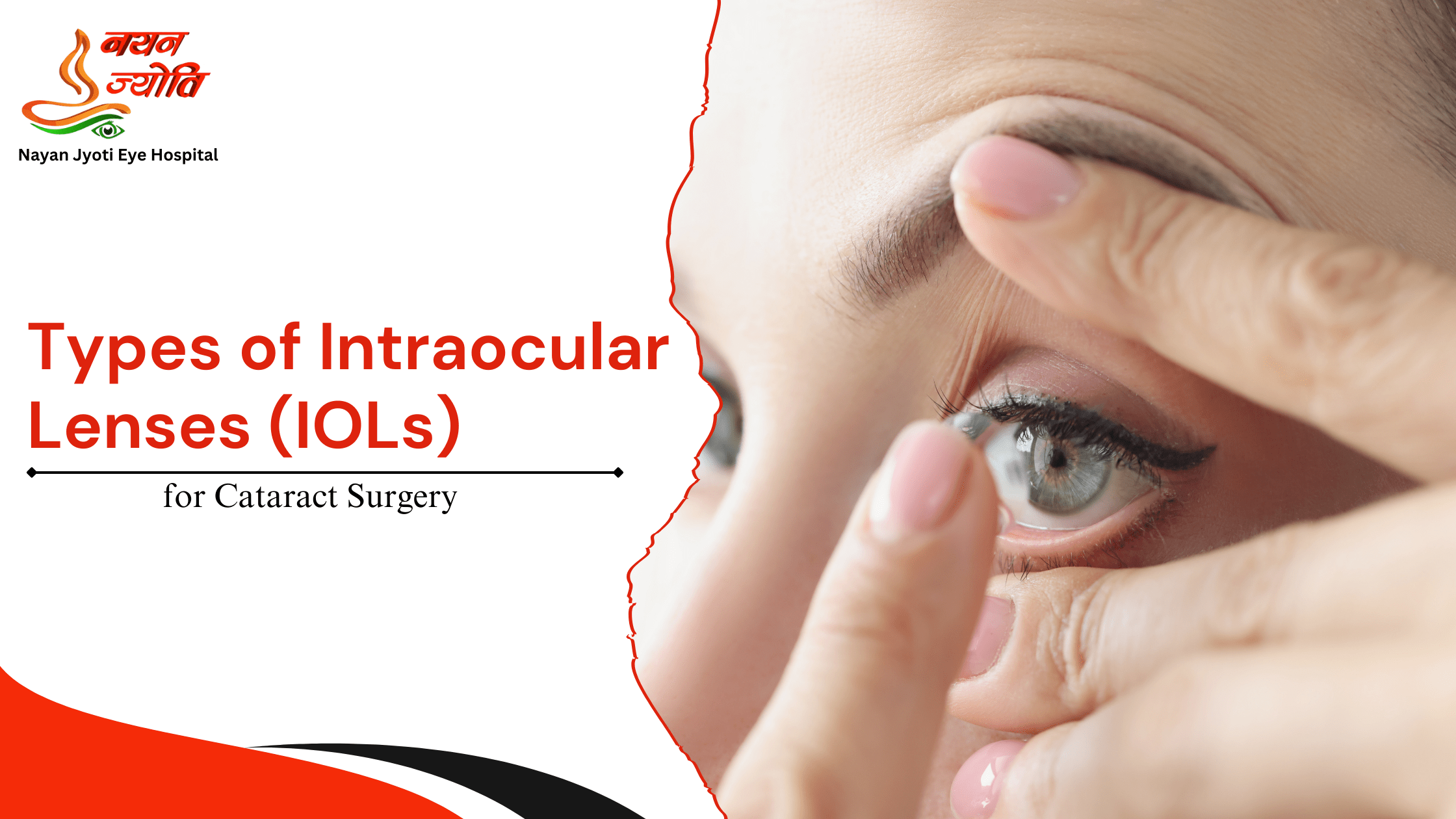
Types of
Intraocular Lenses (IOLs) for Cataract Surgery: A Guide from Nayan Jyoti Eye
Hospital
Cataract surgery is one of today's most common and successful eye surgeries. During the procedure, the eye's clouded lens is replaced
with an artificial lens known as an intraocular lens (IOL). Choosing the right
IOL is crucial for achieving the best visual outcome. At Nayan Jyoti Eye
Hospital, we offer a range of IOL options tailored to meet the unique needs of
our patients. In this blog, we'll explore the different types of IOLs available
for cataract surgery and how they can enhance your vision.
1. Monofocal IOLs
Overview
Monofocal IOLs are the most commonly used lenses in cataract surgery.
These lenses are designed to provide clear vision at a single distance—either near,
intermediate, or far. Most patients who opt for mono-focal IOLs choose to have
them set for distance vision and then use reading glasses for close-up tasks.
Benefits
Considerations
2. Multifocal IOLs
Overview
Multifocal IOLs are designed to provide clear vision at multiple
distances, reducing or eliminating the need for glasses. These lenses have
different zones set at varying distances, allowing patients to see well both up
close and at a distance.
Benefits
Considerations
3. Toric IOLs
Overview
Toric IOLs are specifically designed for patients with astigmatism—a
condition where the cornea is irregularly shaped, leading to blurred vision.
Toric lenses correct astigmatism, providing clear vision at a single distance.
Benefits
Considerations
4. Accommodative
IOLs
Overview
Accommodative IOLs are designed to mimic the eye’s natural ability to
change focus. These lenses move within the eye, allowing for a more natural
range of vision from near to far.
Benefits
Considerations
5. Extended Depth
of Focus (EDOF) IOLs
Overview
EDOF IOLs are a newer type of lens designed to provide a continuous
range of vision, particularly improving intermediate vision (e.g., computer
work) while still offering good distance vision.
Benefits
Considerations
6. Light-Adjustable
IOLs
Overview
Light-adjustable IOLs (LALs) are a cutting-edge option that can be
adjusted after surgery. These lenses allow for fine-tuning of vision
post-operatively through UV light treatments, providing personalized vision
correction.
Benefits
Considerations
Choosing the Right
IOL
Selecting the right IOL depends on various factors, including your
lifestyle, visual needs, and any pre-existing eye conditions like astigmatism.
During your consultation at Nayan Jyoti Eye Hospital, our experienced
ophthalmologists will thoroughly assess your eye health and discuss the best
IOL options for you.
Conclusion
Cataract surgery offers the opportunity to not only restore clear vision
but also enhance your overall visual experience with the right choice of IOL.
Whether you need simple distance vision correction or a lens that allows for
multifocal capabilities, Nayan Jyoti Eye Hospital is here to guide you through
the decision-making process.
Our goal is to help you achieve the best possible outcome tailored to
your unique needs. With the latest technology and a dedicated team of eye care
professionals, we ensure that your cataract surgery is a seamless and
successful experience.
For more information or to schedule a consultation, visit Nayan Jyoti
Eye Hospital in Auraiya, Uttar Pradesh. Your vision is our priority, and we are
committed to helping you see the world more clearly.